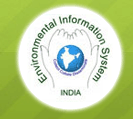| 2005 |
2006 |
KEY FIGURES |
| MILLENNIUM DEVELOPMENT GOAL-1 Eradicate extreme poverty and hunger |
| |
|
BENIFICIARIES |
| 96.7 |
87.8 |
Million hunger people in 78 countries (82 in 2005) |
| 23.6 |
24.3 |
Million in development projects (DEVs) |
35.0
10.5
6.0
18.5 |
16.4
7.7
0.8
7.9 |
Million in emergency operations (EMOPs):
Million in conflict situations
Million in economic failure
Million in natural disasters |
| 38.1 |
47.0 |
Million in protracted relief and recovery operations (PRROs) |
| 79.5 |
76.4 |
Million in women and child |
| 2.1 |
1.9 |
Million refugees |
| 8.3 |
7.2 |
Million internally displaced people (IDPs) |
| 1.3 |
1.2 |
Million returnees |
| |
|
QUANTITY OF FOOD AID |
| 4.2 |
4.0 |
Million metric tons of food distributed |
| 2.5 |
2.0 |
Million metric tons of food procured |
| |
|
APPROVED PROJECTS IN 20061 |
| 3 |
9 |
Country programs (CPs), valued at US$417 million |
| 7 |
1 |
DEVs, valued at YS$5 million |
| 28 |
20 |
EMOPs/Immediate Response account (IRA), valued at US$1.5 billion |
| 14 |
18 |
PRROs, valued at US$801 million |
| 18 |
15 |
Special operations (SOs), valued at US$115 million |
| |
|
INCOME AND EXPENDITURES |
| 2.8 |
2.7 |
US$ billion in concentrations received |
| 2.97 |
2.93 |
US$ billion in income |
| 2.9 |
2.7 |
US$ billion in direct expenditures |
| 3.1 |
2.9 |
US$ billion in total expenditures |
| |
|
DEVELOPING COUNTRIES AND WFP ASSISTANCE |
| 89.0 |
90.6 |
Percent of development multilateral recourses meeting country concentration criteria |
| 67.4 |
68.8 |
Percent of development resources reached in least developed countries (LDCs) |
| 78.0 |
77.0 |
Percent of food procured (tonnage basis) in developing countries |
| 75.0 |
73.9 |
Percent of WFPs development assistance invested in African countries |
| 2005 |
2006 |
KEY FIGURES |
|
MILLENNIUM DEVELOPMENT GOAL-2 Achieve universal Primary education |
| |
|
BENIFICIARIES |
| 21.7 |
20.2 |
Million school children received school meal/take –home rations |
48.0
--- |
47.9
6.0 |
Percent were girls
Percentage increase rate of change in absolute enrolment for children in schools with WFP school feeding program |
| 94.0 |
90.0 |
Percentage of children attended school through out the year with school feeding programmes |
|
MILLENNIUM DEVELOPMENT GOAL-3 promote gender equality and empower women |
| 52.0 |
51.0 |
Percentage of beneficiaries were women or girls Million in women and child |
| 333 |
375 |
Thousand women were in leadership positions food management committees |
| 10.0 |
5.5 |
Million women received household food rations at distribution points in general food distributions |
| 4.8 |
4.7 |
Million household food entitlements were issued in women’s names for general food distributions |
|
MILLENNIUM DEVELOPMENT GOAL-4 Reduce child mortality |
| 58.2 |
58.8 |
Million children were assisted in WFP operations |
| 8.1 |
9.9 |
Million malnourished children received special nutritional special support |
|
MILLENNIUM DEVELOPMENT GOAL-5 improve maternal health |
| 2.5 |
1.5 |
Million vulnerable women received additional nutritional support |
| 89 |
89 |
Percent of pregnant and lactating mothers surveyed received micronutrient-fortified food (ECWI.1) 2 |
|
MILLENNIUM DEVELOPMENT GOAL-6 Combat HIV/AIDS, malaria and other diseases |
| 21 |
21 |
Of the 25 highest HIV/AIDS prevalence countries received WFP assistance |
| 9.0 |
8.4 |
Million people affected by HIV/AIDS received WFP food assistance |
| 51 |
51 |
Countries received assistance for tuberculosis and HIV/AIDS prevention activities |
|
MILLENNIUM DEVELOPMENT GOAL-7 Ensure Environmental Sustainability |
| 41.3 |
28.0 |
Million people received WFP food as an incentive to build assets, attend training, build resilience to climatic shocks and preserve livelihoods |
| MILLENNIUM DEVELOPMENT GOAL-8 Develop a global partnership for development promote gender equality and empower women |
| 14 |
14 |
Stand –by- partners |
| 25 |
29 |
Joint emergency needs assessments conducted with FAO and UNHCR |
| 72 |
84 |
Corporate and private entities provided support donating cash and in –kind gifts worth US$55.5 million |
| 2,270 |
3,264 |
Non-governmental organizations worked with WFP in 2006 |





